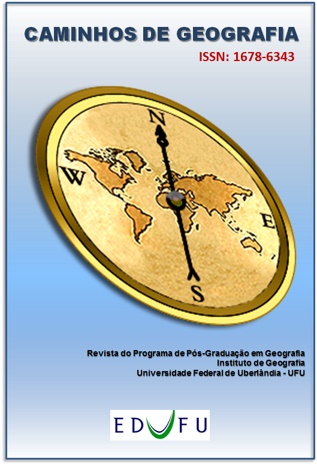A CARTOGRAFIA GEOMORFOLÓGICA EM ESCALA REGIONAL: O CASO DA REGIÃO METROPOLITANA DA BAIXADA SANTISTA -SP
DOI:
https://doi.org/10.14393/RCG228356334Keywords:
Manual Técnico de Geomorfologia, Unidades Geomorfológicas, Interpretação do relevo, Geomorfologia costeira, Níveis da pesquisa geográficaAbstract
Geomorphological mapping is an important instrument for Geomorphology, for earth sciences in general and for landscape planning. It defines the reading, interpretation and spatialization of the forms and processes that dynamize the functioning of the landscape, starting from the use of methodologies and specific symbologies attending different taxonomies. Considering this, Technical Manual of Geomorphology (IBGE, 2009) was applied focused on regional cartography with procedures organized into levels, according to Libault (1971), focusing on discussing the process of interpretation, in addition to proposing the representation and characterization of the geomorphology of the Metropolitan Region of Baixada Santista in scale 1:100,000. Throughout the interpretation, the contextualization of the evolution of forms and toponymy stood out as key elements in determining the identity of geomorphological units, as assumed by the technique adopted. It was also clarified that throughout the interpretation there is integration between the classifications and the spatial delimitations of forms identified in different taxons. From some generalizations and groupings of what was interpreted, imposed by scale and visibility on the map, regional geomorphology was represented and characterized, especially geomorphological units and predominant forms.
Downloads
Downloads
Published
How to Cite
Issue
Section
License
Autores que publicam nesta revista concordam com os seguintes termos: a) Autores mantém os direitos autorais e concedem à revista o direito de primeira publicação, com o trabalho licenciado sob a Creative Commons Atribuição-NãoComercial-SemDerivações 4.0 Internacional. b) Autores têm permissão e são estimulados a publicar e distribuir seu trabalho online (ex.: em repositórios institucionais ou na sua página pessoal), já que isso pode gerar alterações produtivas, bem como aumentar o impacto e a citação do trabalho publicado. c) Em virtude de aparecerem nesta revista de acesso público, os artigos são de uso gratuito, com atribuições próprias, em aplicações educacionais e não-comerciais.











